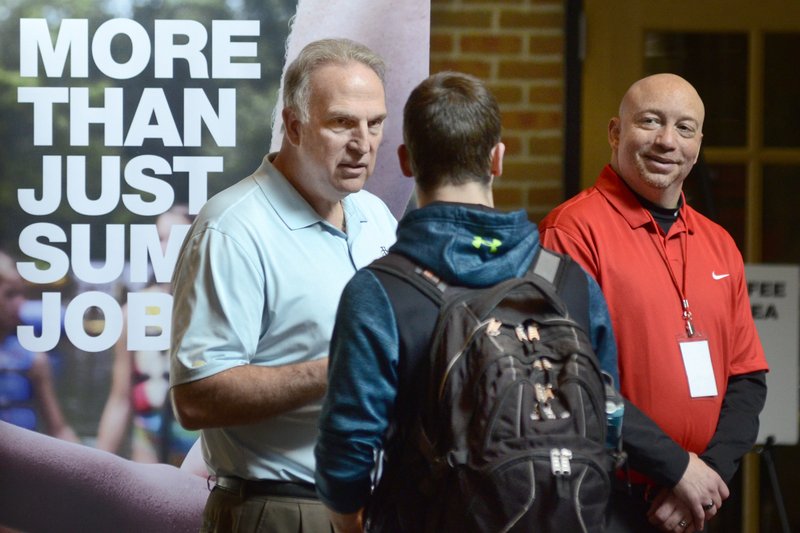WASHINGTON -- There's a job vacancy waiting to be filled for almost every unemployed American.
The labor market has come within a hair of reaching that milestone for the first time in records going back to 2000. Job openings surged to a record 6.55 million in March, the Labor Department reported Tuesday. That compares with the 6.585 million unemployed workers in March -- just 35,000 more than the number of available positions.
It's a historical anomaly. Typically, there are far more unemployed people than advertised job openings -- often twice as many. And back in July 2009, just after the recession, there were 6.7 unemployed people, on average, for each open job. With that ratio now at essentially 1-to-1, the job market appears to be tilting in favor of workers and job-seekers rather than employers.
Still, the sharp jump in openings -- they rose nearly 8 percent in March -- does raise questions. If employers are so desperate, for instance, why aren't they raising pay sharply enough to attract and keep employees?
Though pay has risen modestly in recent months, the gains remain below historical averages.
Some economists say they still think the spike in open jobs means that employers will have to raise pay faster in coming months.
"Employers beware," said Chris Rupkey, chief financial economist at MUFG Bank. "Wages have nowhere to go but up; it's just a matter of time."
Some data suggest that workers are earning more: One measure of wages and salaries rose in the first three months of the year by the most in 11 years. But a separate measure of average hourly pay increased 2.6 percent in April from a year earlier.
On Friday, the Labor Department reported that the U.S. added a solid 164,000 net jobs in April while the unemployment rate reached a new milestone, falling below 4 percent for the first time since 2000.
The U.S. unemployment rate was 3.9 percent in April. The unemployment rate in Arkansas in March, the most recent measurement, was 3.8 percent.
The last time the nation's unemployment rate fell below 4 percent, average wages were rising at a much healthier 4.5 percent annual rate.
So where are all the job openings? The biggest gains in March were in construction, where openings soared by roughly one-third to 248,000. Job listings also jumped in education, professional services like accounting, retail, hotels and restaurants, and shipping and warehousing.
Nick Bunker, an analyst at the Washington Center for Equitable Growth, said he thinks the record-high number of job openings in part stems from weak wage gains.
Typically, as unemployment falls, employers advertise fewer job openings because it tends to cost them more to recruit and pay new employees.
But now, with wage gains sluggish, employers may be willing to post jobs because they don't need to pay so much.
Companies may also now be quicker to post openings online than they would have been to advertise through paid newspaper want ads and other methods that were more typical in the past.
Many larger firms use software that scans for keywords to initially screen resumes, which may make it easier and cheaper to post lots of jobs -- even those that an employer isn't yet prepared to fill.
Also, economic research by the Federal Reserve suggests that employers aren't poaching as many workers who already have jobs as they did in the past, Bunker says. More Americans than in the past are staying in their jobs rather than switching to new ones for higher pay. That's left more jobs unfilled.
Yet Tuesday's report, known as the Job Openings and Labor Turnover survey, suggests that that could be changing. The number of people quitting their jobs has increased 6.4 percent in the past year.
The increase in the quits rate, which is considered a measure of workers' willingness to voluntarily leave because they're confident of finding better employment, should be a positive for worker pay. Although it lags the Labor Department's other jobs data by a month, the job openings report adds context to monthly payrolls figures by measuring dynamics such as resignations, help-wanted ads and the pace of hiring.
The increasingly tight job market will likely be noted by Federal Reserve policymakers; the previous chairman, Janet Yellen, often cited data from the job openings report. At this rate, vacancies could surpass the 6.35 million unemployed as of April (openings are released with a lag behind the more closely watched monthly jobs report).
At the same time, the increase in job openings doesn't necessarily mean a boon for anyone who's unemployed, given hurdles such as the lack of relevant skills that employers frequently cite.
In addition, workers may be reluctant to relocate to where the jobs are, or to accept a position with lower pay or in a different field, for example.
Information for this article was contributed by Shobhana Chandra and Chris Middleton of Bloomberg News; and by Christopher S. Rugaber of The Associated Press.
A Section on 05/09/2018

